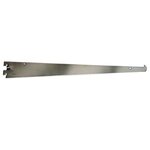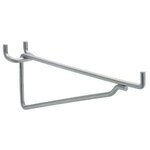What shape or size, I'm talking about not useing a long screwdriver to get in those cracks, what would be better? And don't want to hear about crowbars and break them apart, any ideas Dry or Wet?
Upvote
0
Follow along with the video below to see how to install our site as a web app on your home screen.
Note: This feature may not be available in some browsers.
What shape or size, I'm talking about not useing a long screwdriver to get in those cracks, what would be better? And don't want to hear about crowbars and break them apart, any ideas Dry or Wet?

I use a welding slag hammer for my crevice tool. One end is pointed the other is flat.



MR. 63bkpker Tommorrow I plan on heading out provided if there is a break in the weather and I intend to take some vids/pictures of these hairline cracks and I,m hoping to find a nice example. I have multiple questions about it and am hoping you or someone else can help me with.MadMarshall,
When I started crevicing I worked some larger cracks and found gold in them, not massive quantities but gold just the same. Then I read Lanny's post on Metal Detecting Bedrock here on Tnet and gave it a try and that is when I began to notice the fine cracks in bedrock. Lanny has deduced that some pockets of gold started out life in a larger crack that was sealed shut by boulders pounding on it during heavy runoff and possibly that is what your brother found. The metal detecting I've done so far of bedrock has led me to only smaller pieces of gold and then not much in any one crack but the stuff is there IF the surrounding conditions are right. As an example: I'd found a section of river nearly devoid of dirt on the bedrock and started searching it with my GMT detector. Over some sections there were numerous signals and when the rocks were opened up there would be gold there but as I got closer to where the late summer flow was at the signals dropped off. So the float gold was farther away from the main stream, makes sense when thinking about it away from the river. I even explored further up the bank side but the signals dropped of dramatically. So my thinking is that each section of the riverbed is slightly different from the one above or below it as the water has been doing some different swirling as it goes along on its way down river and out to the ocean. My best located spot to date was along the side bank of a river where one very large boulder started collecting a bunch of other boulders on its down river side. Have fun all.........63bkpkr